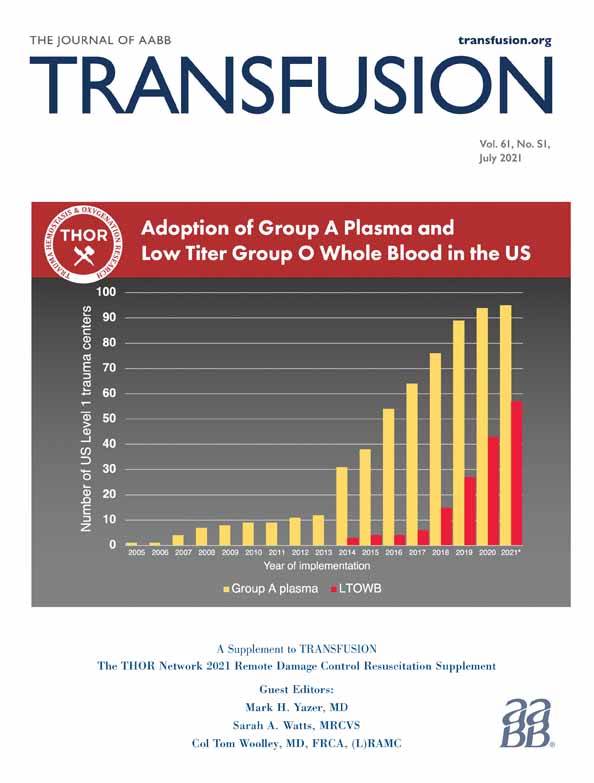An analysis of outcomes for pediatric trauma warm fresh whole blood recipients in Iraq and Afghanistan
Abstract
Background
Whole blood therapy—which contains the ideal balance of components, and particularly fresh whole blood—has been shown to be beneficial in adult trauma. It remains unclear whether there is potential benefit in the pediatric population.
Study Design and Methods
This is a secondary analysis of previously published data analyzing pediatric casualties undergoing massive transfusion in the Department of Defense Trauma Registry. Pediatric patients with traumatic injury who were transfused at least one blood product were included in the analysis. We compared children who received component therapy exclusively to those who received any amount of warm fresh whole blood.
Results
Of the 3439 pediatric casualties within our dataset, 1244 were transfused at least one blood product within the first 24 h. There were 848 patients without severe head injury. Within this cohort, 23 children received warm fresh whole blood overall, 20 of whom did not have severe head injury. In an adjusted analysis, the odds ratio (95% confidence interval [CI]) for survival for warm fresh whole blood recipients was 2.86 (0.40–20.45). After removing children with severe brain injury, there was an independent association with improved survival for warm fresh whole blood recipients with an odds ratio (95% CI) of 58.63 (2.70–1272.67).
Discussion
Our data suggest that warm fresh whole blood may be associated with improved survival in children without severe head injury. Larger prospective studies are needed to assess the efficacy and safety of whole blood in children with severe traumatic bleeding.
CONFLICT OF INTEREST
The authors have disclosed no conflicts of interest.




